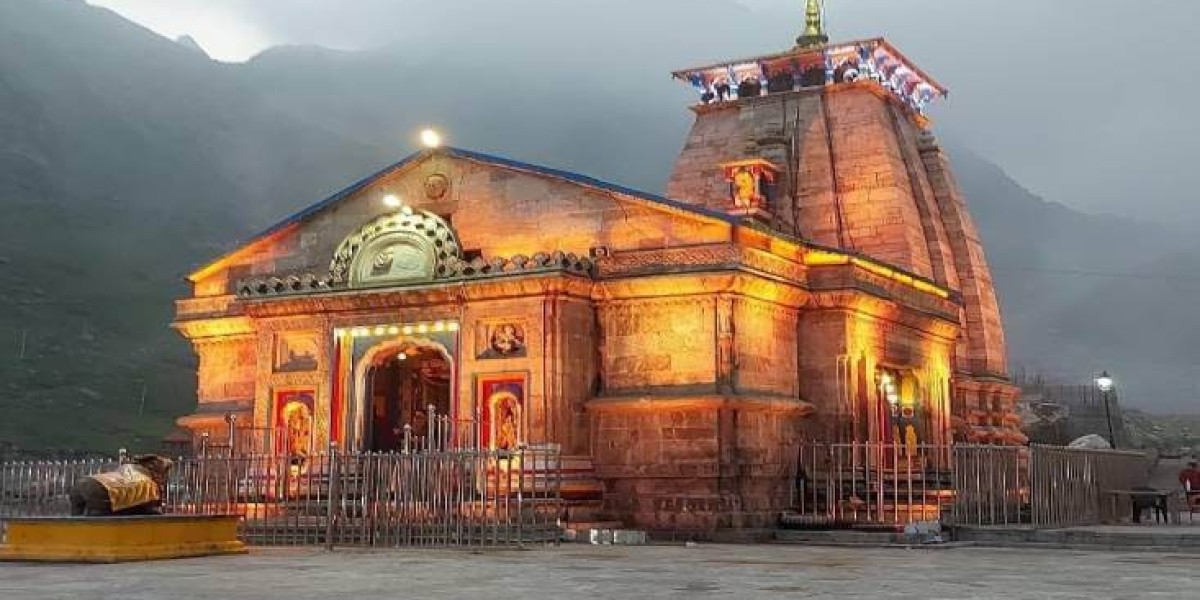The Chardham Yatra is one of the most revered pilgrimages in India, drawing countless devotees and travelers each year. Nestled in the majestic Himalayas, this sacred journey takes pilgrims to four significant shrines: Yamunotri, Gangotri, Kedarnath, and Badrinath. Each of these destinations holds immense spiritual significance and offers breathtaking natural beauty. If you’re planning to undertake this transformative journey, here’s everything you need to know to make your Chardham Yatra experience enriching and memorable.
Understanding the Chardham Yatra
The term "Chardham" translates to "four abodes," and these four holy sites represent a divine pilgrimage for Hindus. Each shrine corresponds to a specific river and deity:
Yamunotri: Dedicated to Goddess Yamuna, it is the source of the river Yamuna and is situated at an elevation of approximately 3,235 meters. The journey begins here, where pilgrims perform rituals in the hot springs and seek blessings.
Gangotri: This shrine is dedicated to Goddess Ganga, the sacred river that flows through the heart of India. The Gangotri temple stands at around 3,042 meters, where devotees often partake in prayers and rituals at the banks of the Bhagirathi River.
Kedarnath: One of the twelve Jyotirlingas dedicated to Lord Shiva, Kedarnath is situated at a height of about 3,583 meters. It is renowned for its majestic temple that has stood the test of time, attracting devotees from all walks of life.
Badrinath: Dedicated to Lord Vishnu, Badrinath is the final destination of the Chardham Yatra. It is located at an altitude of 3,133 meters and is known for its stunning architecture and the breathtaking backdrop of the Neelkanth Peak.
Best Time to Undertake the Chardham Yatra
The ideal time for the Chardham Yatra is between April and November, as the weather is pleasant and conducive for travel. The pilgrimage usually begins with the opening of the Yamunotri and Gangotri temples, which takes place in April or May, and concludes with the closing of these temples in November. Each shrine has its specific dates for opening and closing, so planning ahead is essential.
How to Reach Chardham
Reaching the Chardham can be an adventure in itself. The closest major city is Dehradun, which is well-connected by air, rail, and road. From Dehradun, you can take a taxi or bus to reach the starting point of the Chardham Yatra.
Yamunotri: The journey to Yamunotri typically begins from the town of Hanuman Chatti. You can either trek approximately 5 kilometers or take a pony or palanquin.
Gangotri: From Uttarkashi, a drive of about 100 kilometers leads you to Gangotri. The last 22 kilometers of the journey must be covered by road, as vehicles are not allowed in the temple vicinity.
Kedarnath: Kedarnath can be accessed from Gaurikund, where you can trek approximately 16 kilometers or hire ponies or palanquins.
Badrinath: Finally, Badrinath is easily accessible by road from Joshimath, which is around 45 kilometers away.
Accommodations and Facilities
The Chardham Yatra attracts a vast number of pilgrims, and as a result, there are numerous accommodation options ranging from budget hotels to more luxurious lodges. The government and private organizations have made arrangements for various facilities, including food and lodging. It is advisable to book accommodations in advance during peak seasons, as they fill up quickly.
In addition to basic accommodations, there are many dharamshalas and guesthouses offering food and shelter for pilgrims. Many facilities are equipped with essential amenities, though some are basic. Carrying your own sleeping gear and food supplies may be beneficial, especially if you plan to trek.
Important Tips for Pilgrims
Health and Fitness: The Chardham Yatra involves significant trekking and altitude changes, so it's crucial to be in good health. Engage in physical activities, such as walking or hiking, in the weeks leading up to your journey.
Packing Essentials: Pack appropriately for the varying weather conditions. Essential items include comfortable trekking shoes, warm clothing, rain gear, and personal medication. Don’t forget your spiritual essentials, like a water bottle, a small pooja kit, and any religious texts you wish to carry.
Respect the Environment: The Chardham region is known for its natural beauty. Pilgrims are encouraged to maintain cleanliness and not litter. Many places have specific guidelines to protect the fragile ecosystem, so adhering to these is essential.
Stay Hydrated and Nourished: The altitude and trekking can take a toll on your energy levels. Carry sufficient water and healthy snacks. Local food options are available at various points along the route.
Stay Connected: Mobile connectivity can be limited in certain areas, so ensure you inform friends or family about your itinerary. Carry a power bank to keep your devices charged.
Guided Tours: If you're unfamiliar with the area or want a more organized experience, consider joining a guided tour. Many travel agencies offer comprehensive packages for the Chardham Yatra, taking care of transportation, accommodation, and meals.
Spiritual Significance of the Chardham Yatra
The Chardham Yatra is not just a physical journey but a spiritual odyssey that offers profound experiences. Each shrine embodies a unique history and connection to Hindu mythology. Many pilgrims report feelings of peace, rejuvenation, and enlightenment during their visit.
As you progress through the Yatra, you will find yourself immersed in the beauty of the Himalayas, surrounded by the serenity of nature. The experience of chanting mantras, performing rituals, and connecting with fellow devotees enhances the spiritual essence of the journey.
Conclusion
The Chardham Yatra is a remarkable pilgrimage that offers a blend of spirituality, adventure, and breathtaking landscapes. It invites individuals from all walks of life to embark on a journey of self-discovery and connection to the divine. Whether you seek spiritual fulfillment or wish to witness the stunning beauty of the Himalayas, the Chardham Yatra has something to offer everyone.
As you prepare for this sacred journey, remember to respect the local culture, embrace the experiences, and be open to the transformative power of the Chardham Yatra. May your journey be filled with blessings, joy, and the fulfillment of your spiritual aspirations.



